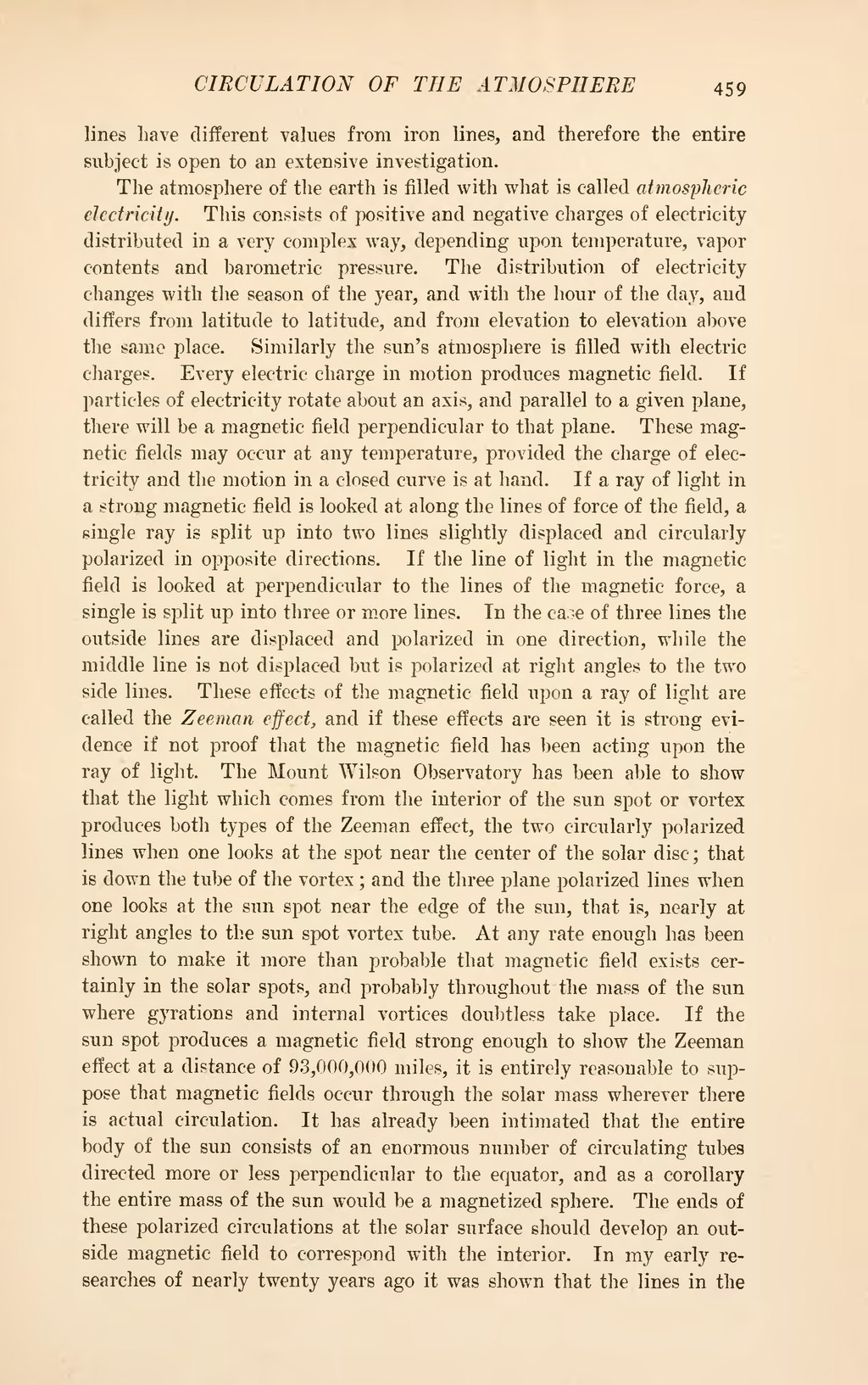lines have different values from iron lines, and therefore the entire subject is open to an extensive investigation.
The atmosphere of the earth is filled with what is called atmospheric electricity. This consists of positive and negative charges of electricity distributed in a very complex way, depending upon temperature, vapor contents and barometric pressure. The distribution of electricity changes with the season of the year, and with the hour of the day, and differs from latitude to latitude, and from elevation to elevation above the same place. Similarly the sun's atmosphere is filled with electric charges. Every electric charge in motion produces magnetic field. If particles of electricity rotate about an axis, and parallel to a given plane, there will be a magnetic field perpendicular to that plane. These magnetic fields may occur at any temperature, provided the charge of electricity and the motion in a closed curve is at hand. If a ray of light in a strong magnetic field is looked at along the lines of force of the field, a single ray is split up into two lines slightly displaced and circularly polarized in opposite directions. If the line of light in the magnetic field is looked at perpendicular to the lines of the magnetic force, a single is split up into three or more lines. In the case of three lines the outside lines are displaced and polarized in one direction, while the middle line is not displaced but is polarized at right angles to the two side lines. These effects of the magnetic field upon a ray of light are called the Zeeman effect, and if these effects are seen it is strong evidence if not proof that the magnetic field has been acting upon the ray of light. The Mount Wilson Observatory has been able to show that the light which comes from the interior of the sun spot or vortex produces both types of the Zeeman effect, the two circularly polarized lines when one looks at the spot near the center of the solar disc; that is down the tube of the vortex; and the three plane polarized lines when one looks at the sun spot near the edge of the sun, that is, nearly at right angles to the sun spot vortex tube. At any rate enough has been shown to make it more than probable that magnetic field exists certainly in the solar spots, and probably throughout the mass of the sun where gyrations and internal vortices doubtless take place. If the sun spot produces a magnetic field strong enough to show the Zeeman effect at a distance of 93,000,000 miles, it is entirely reasonable to suppose that magnetic fields occur through the solar mass wherever there is actual circulation. It has already been intimated that the entire body of the sun consists of an enormous number of circulating tubes directed more or less perpendicular to the equator, and as a corollary the entire mass of the sun would be a magnetized sphere. The ends of these polarized circulations at the solar surface should develop an outside magnetic field to correspond with the interior. In my early researches of nearly twenty years ago it was shown that the lines in the

